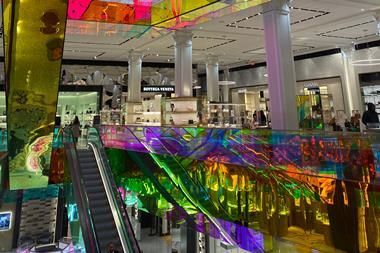International fashion pureplay Zalando expects to return to growth as it follows a new strategy.

Zalando, which reported a “challenging” year, aims to cater for a larger share of the fashion and lifestyle ecommerce market with a “pan-European ecosystem for customers and partners”.
Zalando will focus on two “growth vectors” – business-to-consumer (B2C) and business- to-business (B2B) – and said that the “ecosystem model is a strategic evolution from the current platform one.”
In B2C, Zalando said it is “differentiating through quality, expanding into more lifestyle propositions and making fashion discovery more inspiring and entertaining.”
In B2B, it is “opening up its logistics infrastructure, software and service capabilities to become a key enabler for brands and retailers on and off the Zalando platform.”
Co-chief executive Robert Gentz said: “Our ambition is to return to strong growth and continue our margin expansion, as reflected in new mid-term guidance.”
For 2023, Zalando reported that gross merchandise volume (GMV) slipped 1.1% to €14.6bn (£12.5bn) and revenue fell 1.9% to €10.1bn (£8.6bn). Adjusted EBIT rose to €350m (£299bn) from €185m (£158bn) – a margin of 3.5% – in what the etailer described as “a challenging year for online fashion retail”.
Through the updated strategy, Zalando aims to achieve a compound annual growth rate of between 5% and 10% for GMV and revenue over the next five years, and adjusted EBIT as a percentage of revenue of between 6% and 8%.



























No comments yet